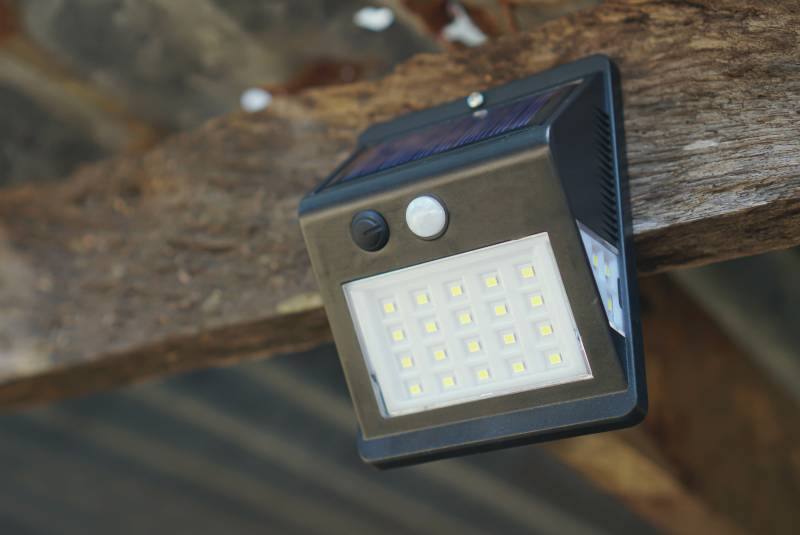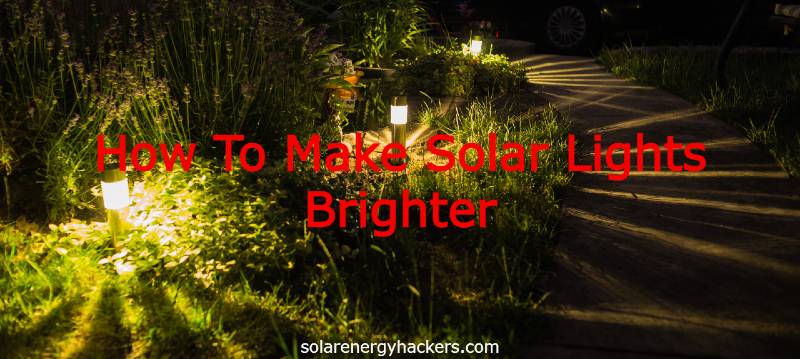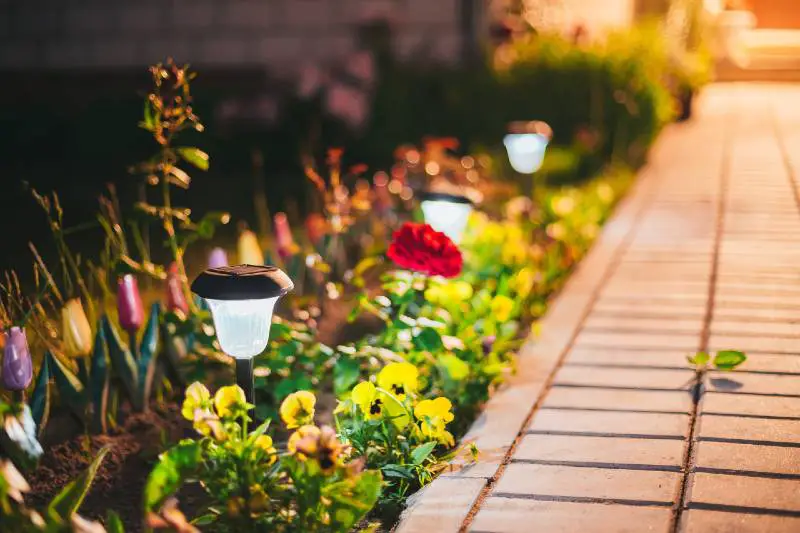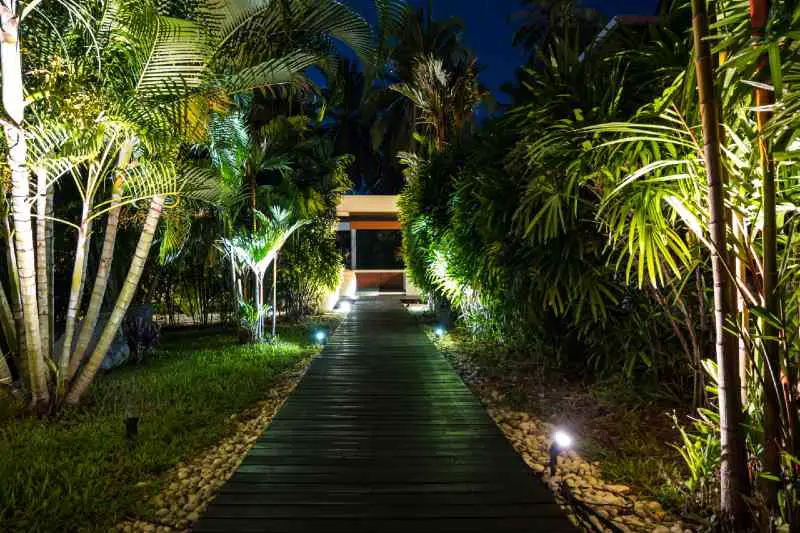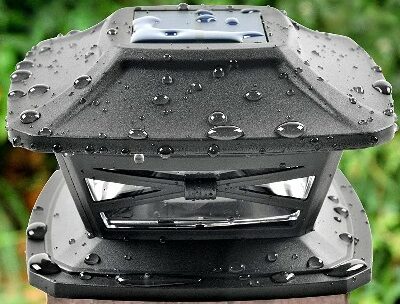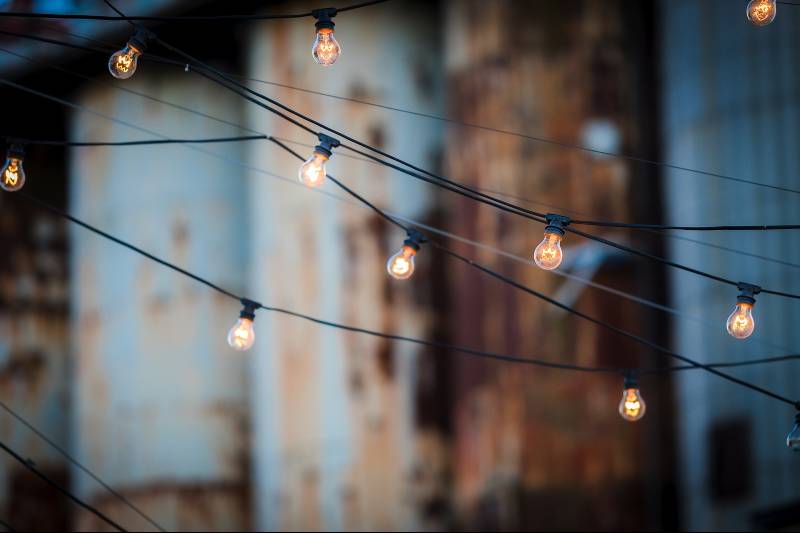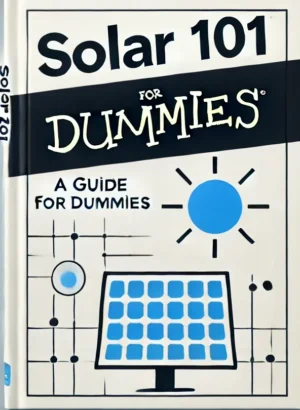Picking the right outdoor lights can make your space pop.
But with so many products out there, how to choose the best solar lights?
It comes down to a few important things like what kind of bulb you need, how bright the lights are, and how good the solar panels are at soaking up the sun.
In this guide, I’ll walk you through everything you need to know—from choosing the right type of bulb to understanding the efficiency of different solar panels.
Key Takeaways
- The type and size of the bulb in solar lights greatly affect their efficiency and lifespan, with options including incandescent, CFLs, and LEDs.
- Brightness in solar lights is measured in lumens, which determines how well different areas are illuminated based on their size and the required visibility.
- Solar panel types vary, with monocrystalline panels offering high efficiency but at a higher cost, while polycrystalline and thin-film panels provide lower efficiencies.
- The choice of battery type and capacity impacts maintenance needs, operational duration, and overall performance of solar lights.
- The weatherproofing rate determines how well solar lights will handle whatever Mother Nature throws at them.
What Factors to Consider While Buying Solar Lights?
1. Bulb Type & Size
Choosing the right light bulb for solar lights is like picking the perfect ingredient for your favorite dish—it can change the outcome.
When it comes to solar lights, not just any bulb will do; the bulb’s type and size play a huge role in how well your lights will work and how long they’ll last.
There are heaps of bulb types out there—more than 20!
But let’s keep things simple and focus on the 3 types that most people use: incandescent, compact fluorescent (CFLs), and LEDs.
Let’s break down these options:
| Bulb Type | Energy Efficiency | Lifespan | Heat Production | Initial Cost |
| Incandescent Lights | Least efficient | 1,000 hours | Gets very hot | Low |
| Compact Fluorescent Lights (CFLs) | Better efficiency (uses 70% less energy than incandescent) | Up to 20,000 hours | Moderate heat | Medium |
| Light Emitting Diodes (LEDs) | Most efficient (uses 75% less energy than incandescent) | Up to 50,000 hours | Minimal heat | High |
Now, about the size of the bulbs—it’s pretty important too.
If you’re decking out your garden with some fairy-tale vibes using solar string lights, you’ll want to go for smaller bulbs, like sizes C3 to C5.
These little guys are perfect for adding a bit of sparkle without being too blinding.
On the flip side, if you need to light up something like a pathway or a driveway, you need bigger bulbs, like C7 to C9, that can throw a more powerful, focused light.
In most cases, I prefer using LEDs because they’re just so efficient and long-lasting.
Plus, they don’t get hot, which is a big bonus when you’re setting them up or adjusting them in your garden.
2. Brightness
Brightness in solar lights is all about lumens, which simply tell you how much light a bulb can give off.
This number helps you figure out if a light will brighten up your space just right—whether it’s a big backyard or a cozy corner of your garden.
Solar lights aren’t one-size-fits-all.
They range from beefy models that can light up a soccer field to more subtle ones perfect for a quiet corner outside.
Here’s how you can choose the right one: First, think about the size of the area you need to light up.
Next, consider how far you want that light to spread.
And finally, decide how bright you need the area to be.
Do you need a spotlight or just a soft glow to set the mood?
Here’s a simple guide to help you figure out the lumens you’ll need for different spots:
- Step lights: 12-100 lumens are enough to guide your way without being too glaring.
- Wall lights: 50-200 lumens work great for general lighting on the outside of your house.
- Landscape lights: 50-300 lumens are perfect for showing off your garden without going overboard.
- Path lights: 100-250 lumens keep your walkways safe and nicely lit.
- Pool lights: 200-400 lumens ensure you can see clearly around the pool, and they make it look inviting, too.
- Motion sensor lights: 300-700 lumens light up when there’s movement, so you only use that bright light when you need it.
- Floodlights: 800+ lumens are what you need for big, open spaces that need a lot of light.
- Small garden (50 m²): 1600 lumens will make your little garden sparkle.
- Medium garden (150 m²): 2800 lumens will brighten up larger garden areas just right.
- Street lights: 5000+ lumens are a must for keeping public spaces safe and well-lit at night.
Keep in mind, though, that the actual performance of your solar lights can fluctuate based on how much sunlight they manage to soak up during the day.
On bright, sunny days, your solar lights will charge up fully and shine at their brightest.
However, on cloudy or overcast days, they might not get enough sun to reach their full potential.
3. Lighting Modes
The lighting modes on solar lights are similar to the settings on your smartphone—they let you tweak the brightness and behavior to fit different vibes around your space.
Just picture being able to dial up your backyard lights from a soft glow to a full-on spotlight with just a simple click, super convenient, right?
Planning a relaxed evening outside? Switch on the dim mode for some gentle, calming light.
Or maybe you need to take the dog out after dinner or keep an eye out for wildlife?
Then, you might want to crank it up to flash mode for brighter, more powerful light.
I usually go for solar lights that also have a color-changing mode.
This feature lets you switch between different colors to match your mood or the occasion.
4. Solar Panel Type
Solar lights are powered by small solar panels that convert sunlight into electricity, but not all solar panels are created equal.
The type of panel you pick impacts the efficiency, durability, and overall effectiveness of your lights.
To get the most out of your solar lights, you’ll want panels with high conversion efficiency.
This means they’re good at turning sunlight into electricity.
You’ll also want panels that are tough enough to stand up to the elements and come with a solid warranty to ensure they last a long time.
Let’s break down the most common types of solar panels you’ll find:
| Type of Solar Panel | Conversion Rate | Cost | Key Features |
| Monocrystalline Solar Panels (Mono-SI) | Up to 24% | High | High efficiencyEfficient space usageHigh cost due to production waste |
| Polycrystalline Solar Panels (p-Si) | Up to 16% | Low | Moderate efficiencyLower cost More space required |
| Thin-Film Amorphous Silicon Solar Panels (A-SI) | Up to 9.1% | Low | Works in low sunlightPortable and flexibleLightweight |
5. Battery Type & Capacity
The battery in solar lights is like the heart of the system—it keeps everything running smoothly and effectively.
That’s why picking the right one helps your solar lights last longer, require less upkeep, and perform well over time.
There are a few common types of batteries used in solar lights, including lithium-ion, nickel-cadmium, nickel-metal hydride, and lead-acid.
Each type has its strengths and weaknesses, so choosing the right one depends on your specific needs.
Here’s a quick rundown of these popular battery types:
| Type of Battery | Charge Cycles | Self-Discharge Rate | Charging Time | Maintenance | Cost | Key Features |
| Lithium-Ion | 500-1000 | 10% per month | 2-4 hours | None | High | Small, lightweight, long-lasting, no memory effect, high initial cost |
| Nickel-Cadmium | Up to 1500 | 20% per month | 1 hour | Every 1-2 months | Low | Durable, cost-effective, suffers from memory effect, moderate maintenance |
| Nickel-Metal Hydride | 300-500 | 30% per month | 2-4 hours | Every 2-3 months | Low | Affordable, recyclable, high self-discharge, heavier |
| Lead-Acid | 200-300 | 5% per month | 8-12 hours | High (requires water topping) | Low | High power output, low initial cost, heavy and bulky, requires regular maintenance |
Battery capacity is another important aspect to think about.
It’s measured in milliampere-hours (mAH), and the rule of thumb is: the higher the mAH, the longer your battery will last between charges.
However, a higher capacity also means longer charging times.
This becomes especially important in winter when there are fewer daylight hours to charge the batteries.
Also, keep in mind how many LEDs are on your solar light string.
More LEDs mean more power consumption—so a string with 30 LEDs will drain the battery a lot quicker than one with just 10 LEDs.
Because of this, I usually suggest aiming for at least 1 hour of sunlight to provide 1 hour of light output.
This is a good rule of thumb to ensure you are balancing charge time with lighting needs.
6. Extra Features
Sometimes, you might want more than just basic lighting when picking out solar lights.
Extra features can spice up how you use and enjoy your outdoor areas.
Think about adding motion sensors, for instance.
They’re not just good for security by turning lights on when there’s movement—they also save power by keeping the lights off when no one’s around.
Timers and dimmers are pretty handy, too.
They let you control when your lights switch on and off and adjust how bright they are, which is perfect for creating the right vibe and saving energy at the same time.
And if you love a bit of flair, color-changing lights could be right up your alley.
They can switch up their colors to suit a party theme or just add some fun vibes to your garden.
There’s also the cool factor of being able to tweak your lights from your smartphone.
With connectivity features, you can adjust your settings from anywhere, giving you loads of flexibility and control over your outdoor lighting.
This is why you need to think about what extras could enhance your experience before you decide on which solar lights to buy.
7. Durability and Weatherproofing
Your solar lights are built to live outdoors, so they need to be tough enough to stand up to some pretty harsh weather.
Materials like stainless steel, ABS plastic, and cast aluminum are great for this.
They’re not just strong—they also resist corrosion and wear, which is crucial for anything that’s going to be outside all the time.
Beyond sturdy materials, your solar lights also need solid weatherproofing.
That’s where the IP rating comes into play.
It shows how well a light can handle everything from a drizzle to a full dunk underwater.
Let me break down what those IP ratings mean in terms of keeping your lights safe from water:
- IPX0: No water protection.
- IPX1: Protection from dripping water.
- IPX2: Protection from vertically dripping water.
- IPX3: Protection from water sprays up to 60° from vertical.
- IPX4: Protection from water splashing from any direction.
- IPX5: Protection from water jets from any direction.
- IPX6: Protection from powerful water jets.
- IPX7: Protection from being submerged in water up to 3 feet (1 meter).
- IPX8: Protection from being submerged in water deeper than 3 feet (1 meter).
For most gardens, I see that an IPX4 rating can be enough—it’ll keep your lights shining through rain and the occasional splash.
But if your garden tends to get more like a pond during a storm, or if you’re close to bodies of water, aim for at least an IPX6.
This higher rating ensures your lights can handle the extra moisture without blinking.
8. Cost
Just like solar lights come in all sorts of shapes and sizes, their prices can vary widely too.
The cost often depends on things like brightness, the materials they’re made of, how long they stay lit, and their battery capacity.
It’s a common mistake to think that the priciest solar lights are the best.
Sometimes, companies jack up their prices just to give the impression of high quality.
But remember, the most expensive option isn’t always the best.
What counts is finding a good quality light that fits within your budget.
Here’s a simple way to do this: Hunt for solar lights that give you the best bang for your buck.
Plus, pay attention to key features like brightness, material durability, battery life, and overall performance.
9. Warranty
You should always look for some sort of warranty when buying solar lights.
It’s usually a red flag if a product comes without any guarantee at all.
Think about it—if the company isn’t willing to stand behind its product with at least a 1-year warranty, should you trust it with your money?
A solid warranty isn’t just about trust; it’s also about peace of mind.
Knowing that you’re covered if your solar lights break down means one less thing to worry about.
This is super important for items like solar lights that have to withstand rain, wind, and all sorts of weather.
So, if something does go wrong, a good warranty ensures you won’t have to pay out of pocket for repairs or replacements.
Related Article: How Do Solar Powered Lights Work
FAQs
How Many Lumens Is Best for Solar Lights?
The best lumens for solar lights depend on the use: 50-200 lumens for garden/pathway lights, 300-700 lumens for motion sensor lights, and 800+ lumens for floodlights.
How Many Watts Are Good for Solar Lights?
About 20-90 watts are good for most solar lights. For general use, 35-50 watts is typical, while higher wattage is better for high-security or bright light needs.
What Is the Best Brand of Solar Lights?
The best and most reliable brands include Brightech, URPOWER, and LITOM which are known for their durability, brightness, and customer satisfaction.
Conclusion
As promised, we’ve gone over all the basics you need to pick the best solar lights for your place.
Here’s a handy pro tip: don’t just think about how they look or how bright they are.
So, go for lights with parts you can easily replace and that can handle whatever the weather throws at them.
This way, your lights won’t just make your space look good—they’ll also be a smart, long-lasting choice that saves you hassle and money down the road.
Join our solar microdosing newsletter and get bite-sized, easy-to-understand insights into the world of solar energy.
From how solar panels work to building your own DIY solar system, we’ve got you covered.


